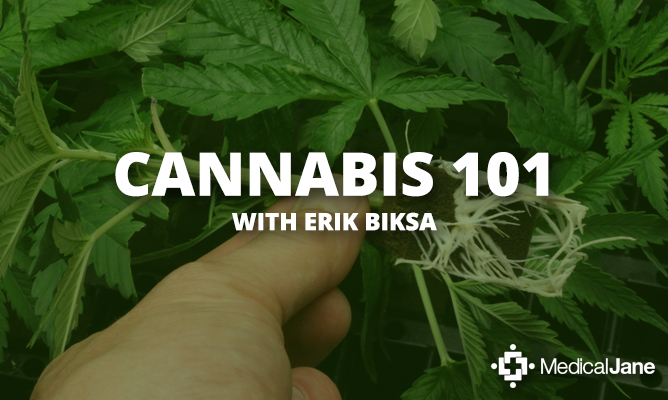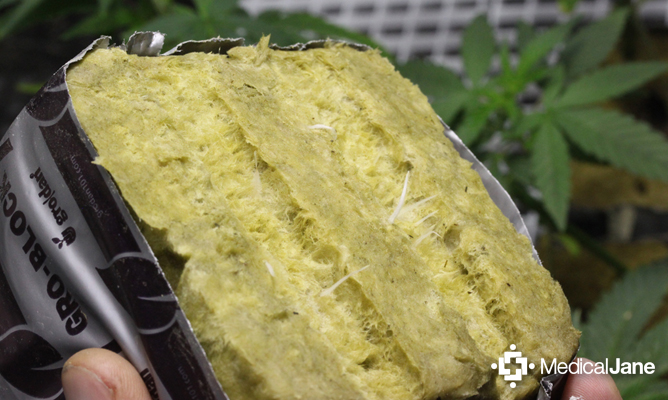
Cannabis 101: How To Start Growing Cannabis From Seed, From Clone
Welcome back again to our series aimed at delivering what prospective horticulturalists seeking to grow medicinal cannabis need to know to get started and improve. So far we have talked about strain selection, choosing a place to grow, and finally, an overview in constructing the cultivation area. We also discussed how to effectively use/install grow lights, as well as ventilation equipment.
With the infrastructure in place, it’s time to start growing quality marijuana. Keep in mind, you may want to do this on a regular basis in order to harvest enough medicine for your needs. Stored cannabis can start to lose some kick, usually after a few months in standard storage conditions. Luckily there are a number of storage companies, like Boveda and Humidicorp, who have successfully tackled this degradation problem.
Propagating New Cannabis Plants
Knowing how to replicate known genetics and how to create fresh starts for experimentation are each valuable skills to have as a medicinal marijuana cultivator.
“In a perpetual harvest system, you can start new plants every 10 days and harvest the same number of mature plants just as often…”
While you should make sure to remain within your allotted plant counts, it’s a good idea to keep a small nursery area in full swing. This way you can replace plants as needed or even keep them on a steady rotation. For example, in a perpetual harvest system, you can start new plants every 10 days and harvest the same number of mature plants just as often by keeping an equal number of plants in propagation, veg and bloom on a timed rotation.
Simply keeping one healthy mother plant at all times doesn’t take much space, time or electricity, especially if maintained with a hydroponics system. The main benefit of this technique is that cuttings can be taken to grow out as new plants when needed, and these new plants will contain relatively-known genetics and growing traits.
You can just as easily dedicate a small area using similar equipment in terms of lighting and ventilation to start new crops from seed. You start pest free when growing from seed, and feminized seeds come with the added benefits of known growth patterns and traits in the resulting plants. If you start with regular seeds, you may still yield a great crop. That being said, you will want to be on the look out for males and potential “keeper” genetics to use as future mother plants.
Proven & Effective Seed Germination
For best results, start growing your seeds in a sterile medium. Too much organic material in a warm, moist and less intensely lit environment can be asking for trouble in terms of things like seedling rots or fungus gnats. Plastic cups or similar pots are perfect if you fill them with a peat moss or coconut coir based soil-less medium.
Rockwool and Oasis are also very good mediums, especially the larger sizes with more depth. Cannabis from seed produces a tap root, whereas plants grown from clone. With that said, deeper is better when growing from seed.

Ideally, the bottom will drain freely, while the top part of the seeding depth will be firm. It should also retain moisture and good contact with the seed.
“Soaking seeds in good quality water for a few hours before planting to a depth of 1/4″ into your germinating media often gets strong and consistent results.”
Seeds don’t need any fertilizer, just warmth and moisture. About 75-85° F is great; a humidity dome is helpful in achieving warm, moist conditions. That being said, be sure to remove the dome as soon as seeds sprout from your grow medium, or young plants will get soft and stretchy.
Gentle fluorescent, induction or plasma full-spectrum lighting is preferred during the early seedling stage. About 1200 lumens of a “daylight” spectrum is a great way to keep the seedling environment warm, and to prevent stretching. That equals about one or two T-5 lamps a foot or so away from the top of your propagation dome. Air flow should be very gentle, as tender tips can dry out quick when emerging.
After seeds have emerged, feeding with a mild B-Vitamin/Fulvic/Humate plant fertilizer supplement tonic or Root Tonic/Microbial additive can be of benefit. Until the first “true” leaves develop, after the initial “seed leaves”, is when you can start to think about fertilizer – we’ll get back to that later in this series.
For now, good quality water is your main focus; the water should have the same pH levels as your grow medium ideally. Don’t overwater the medium or let it dry out – keep it nice and evenly moist. Some novice growers suggest germinating in paper towels, but I would advise against it.
Soaking seeds in good quality water for a few hours before planting to a depth of 1/4″ into your germinating media often gets strong and consistent results. Most cannabis seeds should have emerged from the medium by the 14th day, although sometimes it can take longer. Still, 5 days is the average. Don’t keep poking and checking for a sprouted seedling. Just be patient and pay attention to the moisture, warmth of your medium.
Consistent, Reliable Rooting For Cannabis Cuttings
Some cannabis strains are easier to start from cuttings than others. Average time to rooting following this method is seven to ten days. While not necessarily the fastest (aeroponic clone production is often faster), this method is a reliable, effective and affordable way to produce healthy new plants with no previous experience required.
A big part of success in cloning is keeping your work area sterile and working fast once you have cut the donor material from the mother plant. Make sure the mother plant is healthy and free of any problems before taking cuttings for future crops. Treating mother plants with B-Vitamins and beneficial microbials (ex. mychorhizae) a day or two prior to taking cuttings often produces healthier, faster rooting clones.

Wipe trays, scissors, blade, cutting board and prop dome down with a mild bleach solution before starting. Rinse well. Use a new razor blade, with the protective oil wiped off or a disposable scalpel. These can often be found at your local hydroponics store.
If you work quickly after shutting off the vent system, and you should, you really don’t need to spray cuttings with water when using a snug fitting dome to cover your tray of cuttings. There’s plenty of moisture in propagation plugs like organic polymers, rockwool, oasis, or peat pellets to keep them from drying out.
“Good hygiene and steady warm temperatures with gentle full spectrum lighting provide high rates of success again, and again.”
Peat pellets like Jiffy 7’s are not the fastest for rooting, but are very forgiving when you follow this method. They’re cheap and plentiful too. Do it right, and you will only need to water the first time until they have roots.
Cut a 6 inch section of plant stem with a grow tip and a couple of nodes below from the mother plant. Have your rooting stimulator (powder, liquid or gel) all ready to dip the cut end in – speed is of the essence! Also make sure your propagation plugs or pellets have been moistened with a pH balanced solution of water or a mild B-Vitamin solution.
Now quickly and gently strip away excess foliage to a crown of top leaves about two inches in diameter. Place the clone on your sterile cutting board and cut on a lower node at about a 45° angle to remove another small piece of stem. QUICKLY place the cut end into your root stimulator, wait about 5 seconds and then QUICKLY slide the cut and treated end into the rooting plug or pellet – it’s best to be gentle but firm here.
A snug fit to the cut stem is essential. Otherwise, cuttings won’t “stick” and take in moisture to root, they will whither and die. Sometimes you will need to poke a hole about 1’2″ deep into them yourself, other times it’s been done for you.
 If there is a breeze you will need to keep the cuttings foliage wet with a clean mister bottle; otherwise it’s not necessary. Wet foliage for prolonged periods is a gateway to diseases like leaf molds and rots.
If there is a breeze you will need to keep the cuttings foliage wet with a clean mister bottle; otherwise it’s not necessary. Wet foliage for prolonged periods is a gateway to diseases like leaf molds and rots.
The ideal environment is the same as with starting seeds in terms of light and temperature; no breeze at all is preferred, however. Lift the lid daily to let the clones breathe, and wipe excess condensation off the propagation dome with a fresh towel or towelette. DO NOT touch cuttings with hands that haven’t been scrubbed clean. Not touching them at all is even better.
Jiffy 7’s usually don’t need watering again until roots are showing, others may need an occasional splash with clean and pH adjusted water or a mild B-Vitamin solution. Look for signs of molds or mildews, and be sure to remove any infected cuttings without rubbing it into others.
If you were careful, you should have no problems while your plants are rooting. Good hygiene and steady warm temperatures with gentle full spectrum lighting will provide consistently high rates of success.
Erik Biksa has been writing about and discussing hydroponics growing, related technologies and cropping methods since 1999 in a variety of professional publications and platforms globally Erik has travelled the world learning and teaching modern …
